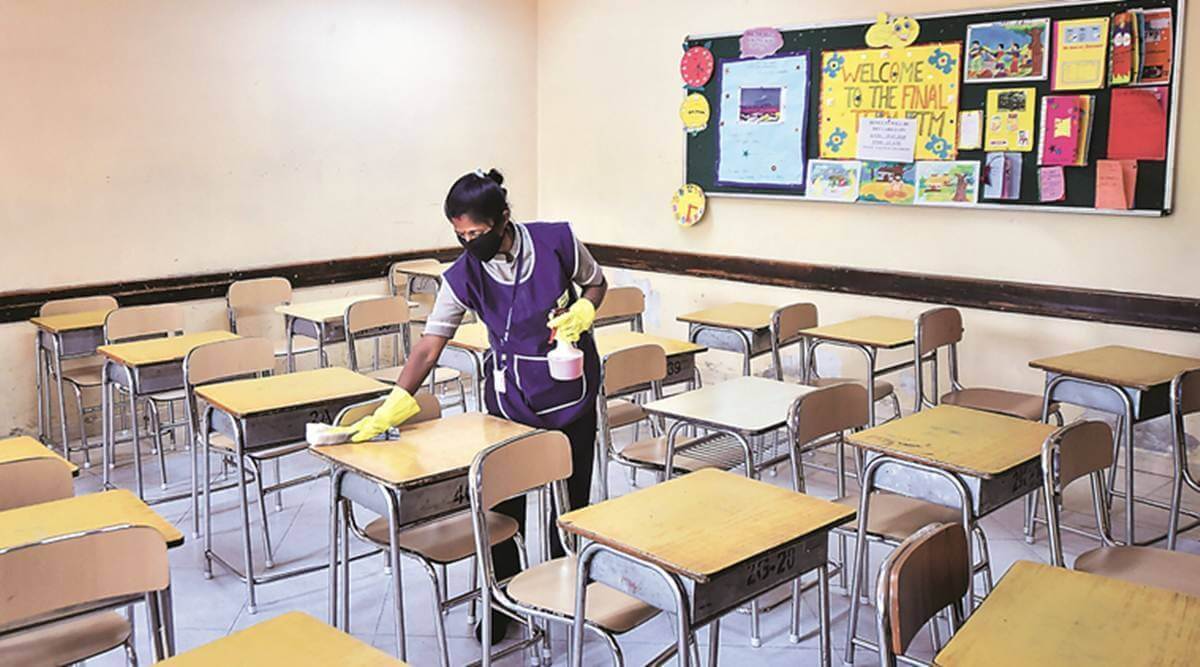Vidya Sethuraman
India Post News Service
The disruption to children’s lives from schools closing is one of the greatest challenges the COVID-19 pandemic has brought to daily life. President Joe Biden has said it was necessary for kids to return “safely” to school and to expect the Center for Disease Control and Prevention (CDC) to release “science-based” guidelines later this week on requirements for schools to reopen amid the ongoing pandemic.
As of Feb. 2, 54 of California’s 58 counties were in the purple tier, and none were in yellow. Since the statewide average daily rate of new cases is 48 cases per 100,000 people, most of the state’s districts are nowhere near the threshold for reopening. Across the country the question of when to reopen public schools has become a deeply divisive issue. The stakes are highest for students of color in major urban districts whose studies show they are losing ground the longer they are out of the classroom and who have the least confidence in the safety of their schools and the responsiveness of their school officials.
The pre-Covid education data demonstrates that students of California are already faced with a learning crisis. Of the six million students enrolled in K-12 schools, four million of them are at a learning disadvantage, including English learners, foster youth and those whose family income levels qualify them for free and reduced meals.
Louis Freedberg, Executive director of EdSource said school reopening is the most contentious issue in our country. Children are found to have fewer ACE2 receptors and are less susceptible to COVID than adults. It is safe for kids to return to school only if adult teachers are vaccinated. Level of community transmission and what mitigation efforts taken by the schools, will determine how soon our kids can return back to the campus safely. This is part of the growing body of evidence demonstrating that if precautions like masking, distancing and hand washing, small groups, ventilation systems, screening and testing, coronavirus transmission can be avoidable in congregate settings for children.
Academic difficulties are just one of the challenges for children across the demographic spectrum, with mental health, eating disorders and emotional scarring adding to a devastating picture. Millions of children across the country were placed at increased risk of food insecurity, with many likely experiencing the health ramifications associated with the abrupt disruption in their access to regular meals.
Most of the school districts have observed learning gaps to widen during the pandemic, relatively higher in the low-income group, said Louis Freedberg.
Tyrone Howard, Professor of Education, Pritzker Family Endowed Chair in Education to Strengthen Families, and Director of the Black Male Institute at UCLA said we will have to address the social-emotional well-being of students. Most of our school districts don’t have enough to employ social workers and this is going to have a huge impact on our student’s mental health. On the other hand, Howard added, this format of distance learning has helped kids who are subjected to bullying in school.
Since the start of the COVID-19 pandemic, thousands of Asian Americans have reported acts of hate and violence, said Akil Vohra, Asian American Lead (AALead). When the schools open, we have to work on measures to combat the hate, which AAPI students might face on the campus.
Bernita Bradley, a longtime activist for public school families in Detroit, said long standing issues around schooling did not change during the pandemic. Many Black families still see the education system as punitive. Ms. Bradley, who said she helped the Detroit school system survey parents and connect with families during the pandemic, said those numbers showed the generational trauma suffered by the community.
Experts say that while there was uncertainty about how children in a classroom environment could impact community spread of disease; new data finds the actual risk to be low. We need solutions customized to local needs, education experts said on the EMS’s panel on Feb 22 briefing. If children are faced with another year of school closures, the effects will be felt for generations to come.







